This wonderful Cornish workshop and museum is dedicated to the legacy of studio pottery trailblazer Bernard Leach
5 watery artworks for World Water Day
5 watery artworks for World Water Day
22 Mar 2024
Mark this important day with us with five fluid works of art
International days of observance can range from the flippant to the gently curious. Among their number are Squirrel Appreciation Day (21 January), Be Kind to Lawyers Day (9 April) and even Bicarbonate of Soda Day (30 December).
Some, however, truly are worthwhile.
World Water Day, an initiative introduced by the United Nations in 1993, highlights issues related to the importance of, and access to, fresh water, sanitation and hygiene. This year’s event, held as usual on 22 March, has a theme of ‘water for peace’.
The simplicity of water, paired with its vital nature, has proved an irresistible fount of inspiration for countless artists over centuries. Whether it’s in the drama of ocean waves, the quiet of still ponds, the atmospheric mood of driving rain or the reflection of puddles, water runs through the artistic world as much as it does our own.
Here are just five of our favourites.
Riding the wave
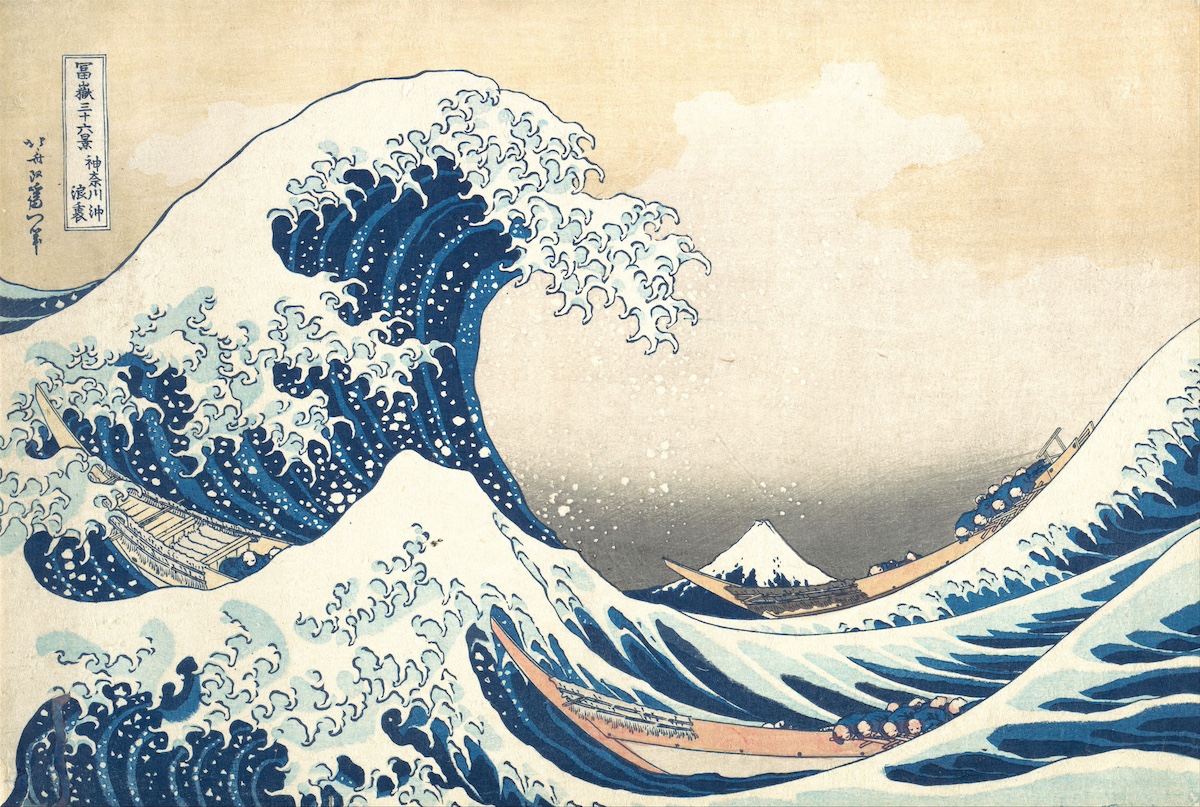 Under the Wave off Kanagawa, also known as The Great Wave, by Katsushika Hokusai (1760–1849), 1831. Image: The Met Collection, HO Havemeyer Collection, Bequest of Mrs HO Havemeyer, 1929
Under the Wave off Kanagawa, also known as The Great Wave, by Katsushika Hokusai (1760–1849), 1831. Image: The Met Collection, HO Havemeyer Collection, Bequest of Mrs HO Havemeyer, 1929
No discussion of watery paintings would be complete without mention of this phenomenally famous woodblock print, which regularly ranks among the best-known artworks of all time. This year it will start to appear on the 1,000-yen banknote in Japan, but already it has been reproduced on countless computer backgrounds, tote bags, book covers and near-infinite other mediums.
Although the great wave draws the eye, the three boats tossed around in the sea and the distant Mount Fuji confirm this as part of Hokusai’s Thirty-six Views of Mount Fuji series. By combining the traditions of Japanese prints and a European approach to perspectives, the end result feels reassuringly familiar to many.
Pads and ponds
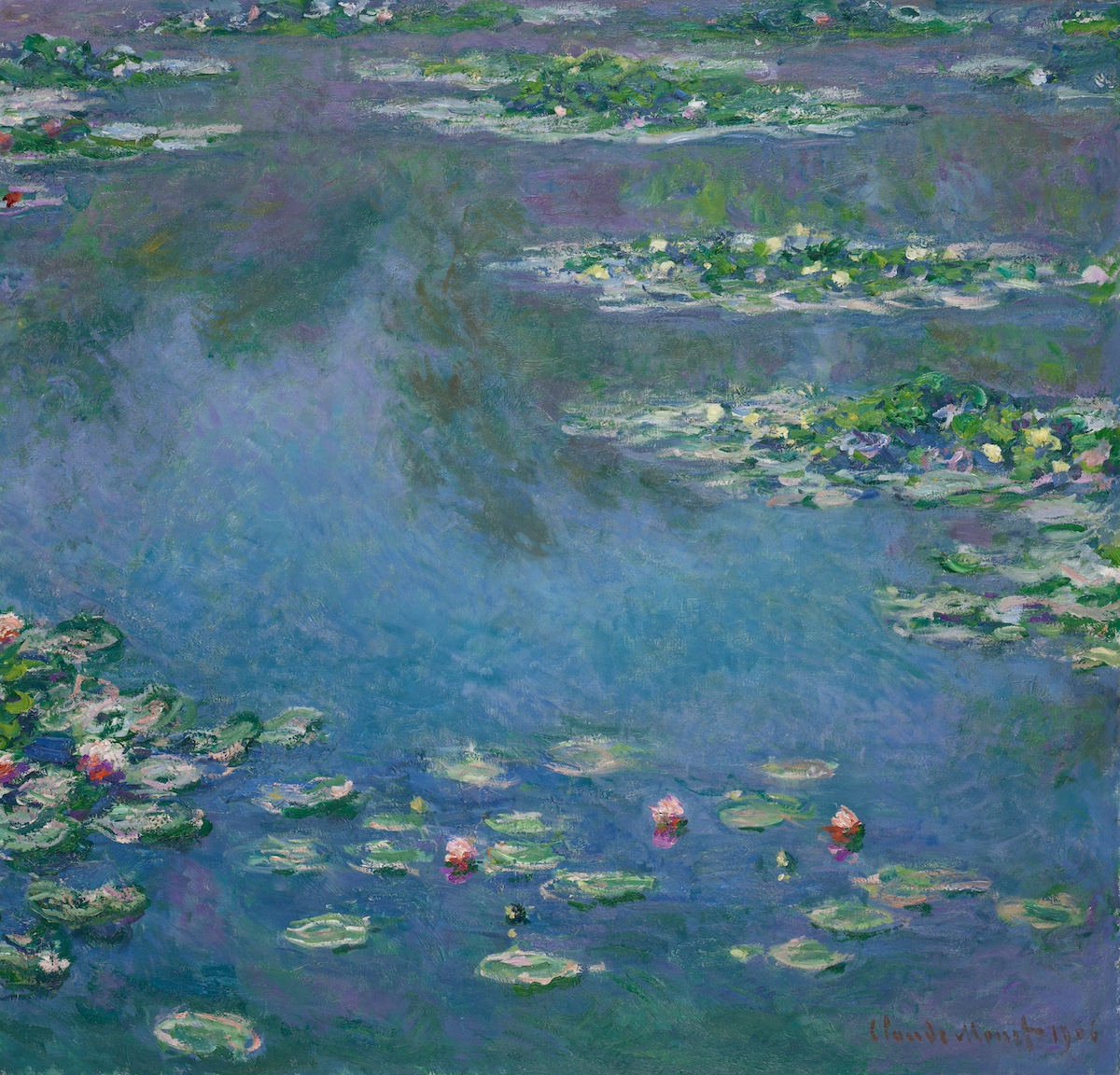 Water Lilies by Claude Monet (1840–1926), 1906. Image: The Art Institute of Chicago, Mr and Mrs Martin A Ryerson Collection 1933.1157
Water Lilies by Claude Monet (1840–1926), 1906. Image: The Art Institute of Chicago, Mr and Mrs Martin A Ryerson Collection 1933.1157
Forgive us for choosing just one of the approximately 250 oil paintings that feature in Monet’s water lilies series – in our defence, a good number are contained in private collections.
We’ve gone for a 1906 example, which is now housed at the Art Institute of Chicago. Whether viewed as individual artworks or as one gorgeous entity, Monet’s water lilies mark a high tide not only for their artist but for the entire Impressionist Movement.
Beginning in the late 1890s, Monet spent decades painting the flowers, water garden and Japanese footbridge on his property in Giverny in France. Initially using a fixed horizon that separated land from water, his perspective eventually shifted to focus purely on the water and its floral inhabitants.
Haunted seas
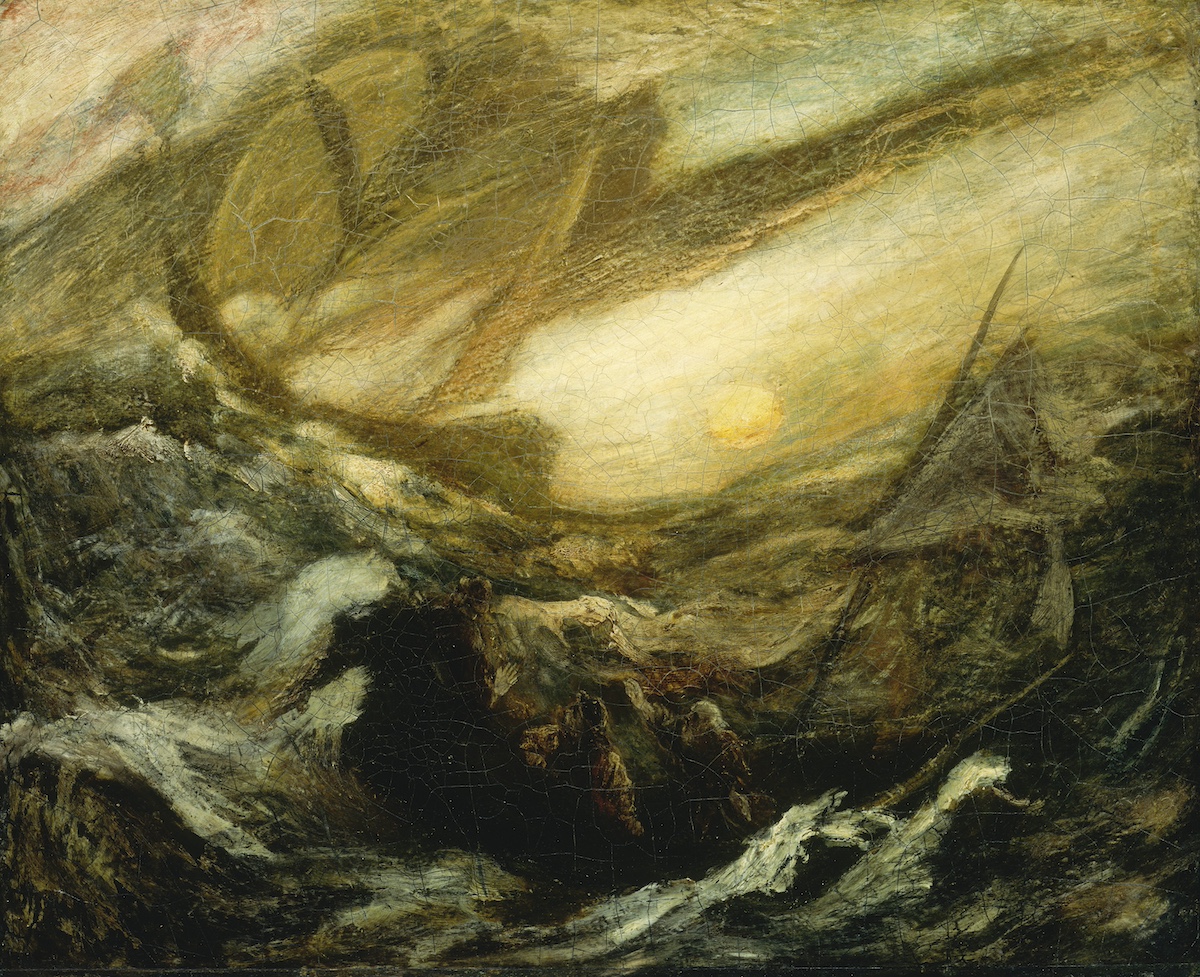 Flying Dutchman by Albert Pinkham Ryder (1847–1917), 1887. Image: Smithsonian American Art Museum, Gift of John Gellatly
Flying Dutchman by Albert Pinkham Ryder (1847–1917), 1887. Image: Smithsonian American Art Museum, Gift of John Gellatly
A ghost ship is doomed to roam the world’s oceans for an eternity and is never allowed to return to land, or its crew to disembark. The Flying Dutchman is perhaps the most legendary ship ever dreamed up; it’s little surprise that it has inspired so many creators, whether in the medium of art, film, literature or opera.
Albert Pinkham Ryder’s moody painting of the haunted ship is perhaps the most famous example ever put to canvas; indeed, it is perhaps the best known of all his works. The American-born artist enjoyed foggy palettes of orange, yellow, gold and black, and during the late 19th century he turned his attention to seascapes.
His penchant for atmospheric, ghostly scenes made the Flying Dutchman an obvious choice of subject. As in legend, the ship lives on eternally through his creation.
Sensing rain
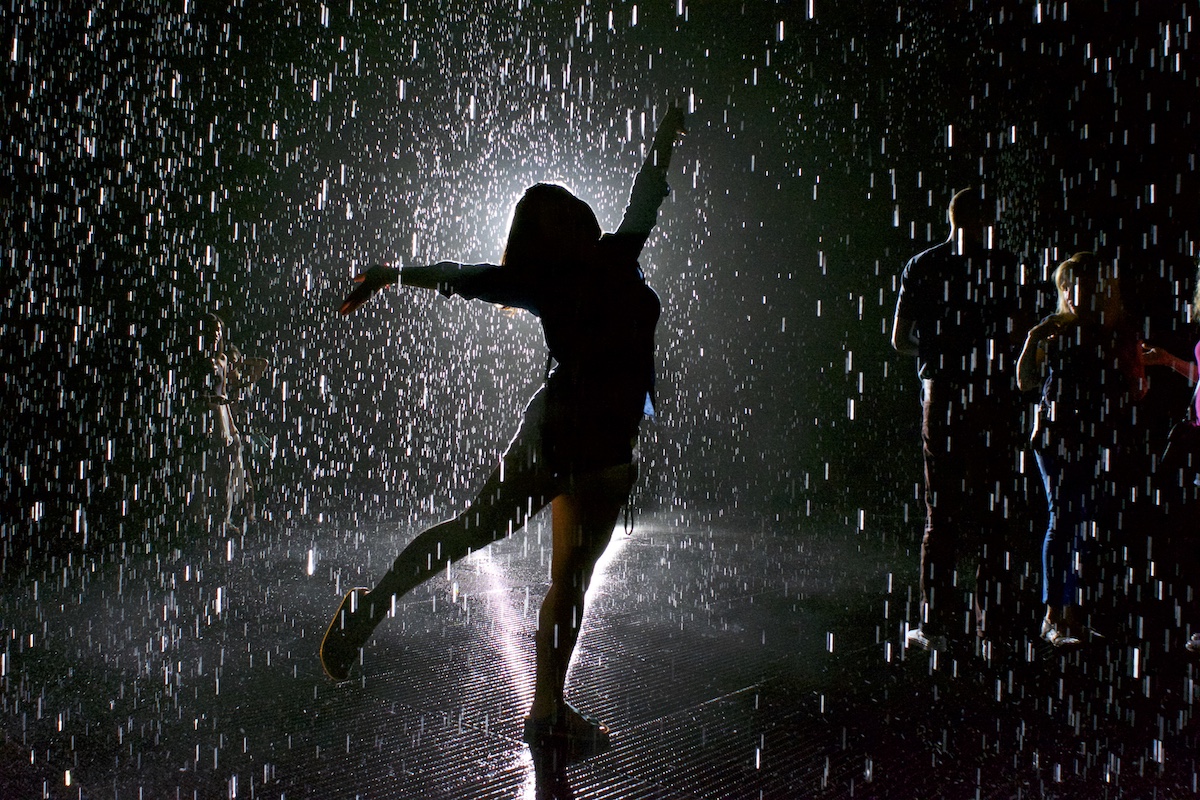 Rain Room, Random International 2012
Rain Room, Random International 2012
In 2012 museums and galleries across the globe – including London’s Barbican, Los Angeles’ LACMA and Busan’s Museum of Contemporary Art – hosted Rain Room, the latest project by post-digital art group Random International.
The concept was a physical space in which rain falls perpetually, disturbed only when it detects human presence. As a person moves through the room, their very being prevents the water falling on them. You are both immersed, and not, in a man-made rainstorm.
Random International is led by Hannes Koch and Florian Ortkrass, both of Germany, who describe being fuelled by research and scientific discovery. Rain Room was seen as a representation of the environment and the impact of human behaviour on nature itself.
Lakeside leanings
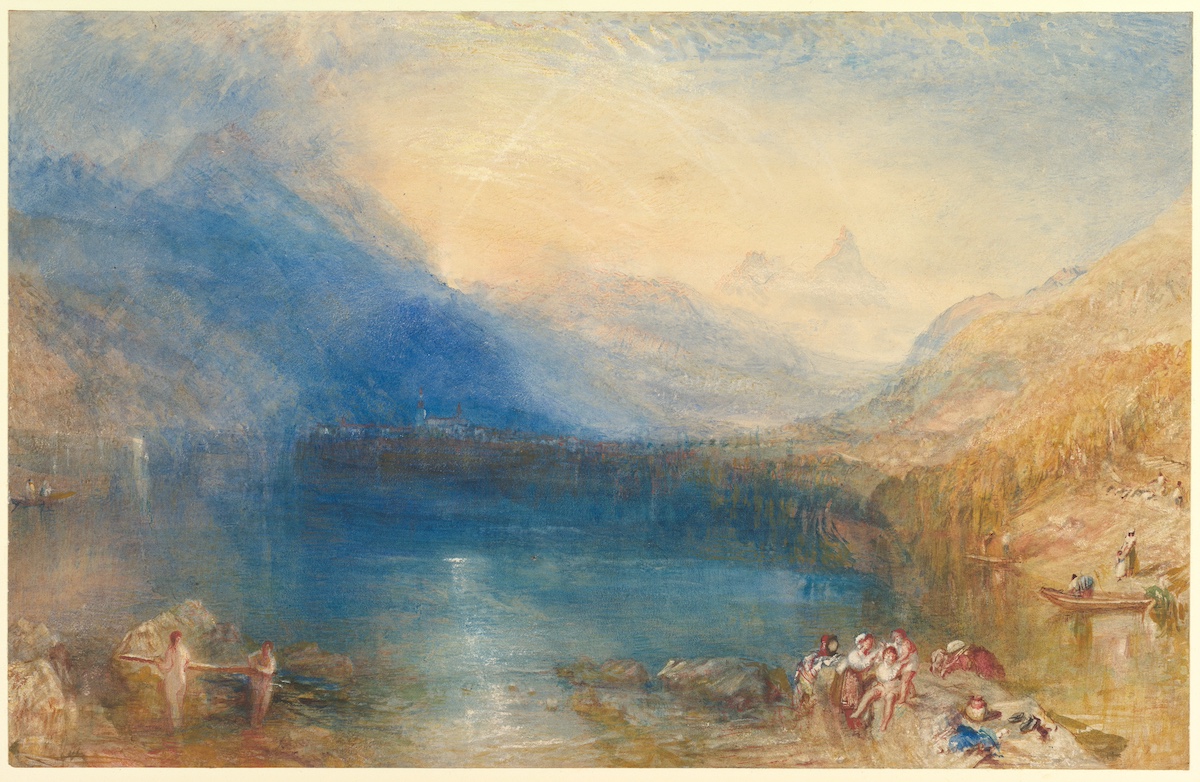 The Lake of Zug by JMW Turner (1775–1851), 1843. Image: The Met Collection, Marquand Fund, 1959
The Lake of Zug by JMW Turner (1775–1851), 1843. Image: The Met Collection, Marquand Fund, 1959
A master of landscapes, Joseph Mallord William Turner was the genius behind more than 2,000 watercolours and 550 oil paintings, many involving water. The rich palette of this Swiss-inspired artwork is particularly enjoyable, and we have the scholar Hugh Andrew Johnstone Munro to thank for it.
Turner had enjoyed a long trip in the Alps and, upon his return home, found a healthy appetite for watercolours that expanded on the sketches he made while abroad. This particular scene, which looks across Lake Zug, was commissioned by Munro and eventually found its way into the hands of famed art critic John Ruskin.
Turner enjoyed connections to bodies of water not simply through his art. In 1841 he famously rowed out onto the Thames during that year’s census, so as to not be counted as present in any specific property.
Find out more
For more inspiring arts activities see The Arts Society Magazine, available exclusively to members and supporters of The Arts Society (to join, see theartssociety.org/member-benefits). And for more online, sign up at theartssociety.org/signup
About the Author
Ciaran Sneddon
writes for The Arts Society
JOIN OUR MAILING LIST
Become an instant expert!
Find out more about the arts by becoming a Supporter of The Arts Society.
For just £20 a year you will receive invitations to exclusive member events and courses, special offers and concessions, our regular newsletter and our beautiful arts magazine, full of news, views, events and artist profiles.
FIND YOUR NEAREST SOCIETY
MORE FEATURES
Ever wanted to write a crime novel? As Britain’s annual crime writing festival opens, we uncover some top leads
It’s just 10 days until the Summer Olympic Games open in Paris. To mark the moment, Simon Inglis reveals how art and design play a key part in this, the world’s most spectacular multi-sport competition



